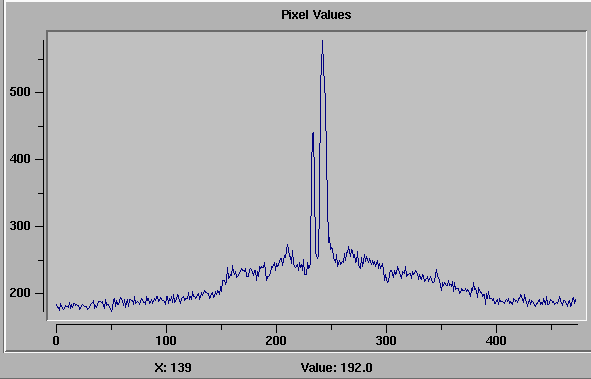FLAMES_GIRAFFE_Simcal_Notes
This page discusses problems with using the the GIRAFFE simultaneous calibration lamp at wavelengths above 650 nm
This page contains images of what happens if you use the GIRAFFE simultaneous calibration lamp at wavelengths exceeding 650 nm. Recall that, whatever the setting, if the SIMLAMP is "ON" then it is on for the whole of the science exposure, with the intensity adjusted by means of ND filters to match the setup/integration time.
Because:
- The FLAMES software is designed to obtain 20 lines within each simultaneous calibration fiber with count levels exceeding 2000 (but not saturated).
- There are many VERY strong Argon lines above 650 nm.
Then ...if you use the GIRAFFE simultaneous lamp at wavelengths exceeding 650 nm, some of the Argon lines will be massively saturated.If your science targets are weak, this saturation may obviously affect your observations.
Images taken using the HR18, 769.1 nm setting, 3000-s integration are shown below.
1. Whole image with cut levels from 150-300 ADU;

2. Zoomed portion of the image, cut levels from 150-300 ADU, with a cut in Y to show the excess of counts near to strong lines;


3. Whole image with cut levels from 2000-3000 ADU. There are about 25 lines with counts above 2000, but not saturated;

So, if you want to avoid this saturation, then you must switch offthe GIRAFFE simultaneous calibration lamp in your template.
Although not ideal, an obvious way to get wavelength information close to your exposure at wavelengths exceeding 650 nm without the above problem is to have at the start and end of your OB a 60-s integration with the SimLamp ON, bracketing your long science exposure with the lamp OFF.
